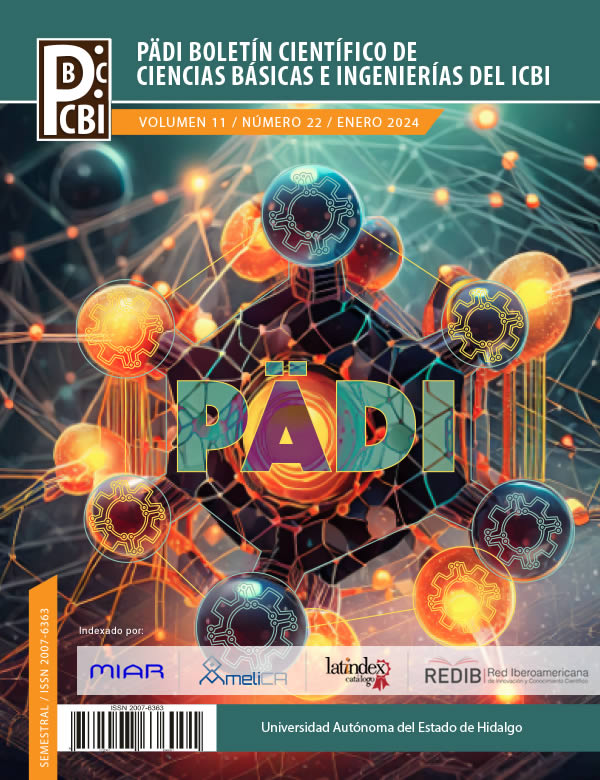Evaluation of point cloud export and import formats for their use in virtual reality graphic engines
Abstract
The natural progression of technology in capturing information from environments has led to an increased use of point clouds in various sectors, such as architectural heritage, surveying, education, mining, and manufacturing. This paper presents different formats for exporting and importing point cloud information to identify the most appropriate option for using it in graphic engines, considering both the final size and the quality of the information obtained with terrestrial laser scanning equipment. This enable us to determine which export and import options are best suited for graphic engines. The information obtained is extremely valuable for the development of future engineering projects with Virtual Reality.
Downloads
References
Bitharis, S., Karolos, I. A., Tsioukas, V., Pikridas, C., Bantis, V., Gkamas, T., y Kontogiannis, S. (2022). Industrial area 3D geometric documentation using Terrestrial Laser Scanners. FIG CONGRESS .
Heinrich-Wild-Strasse (2018). Leica Cyclone Basic Comprehensive laser scan software for field & office.
Huber, D. (2011). The ASTM E57 file format for 3d imaging data exchange. En Three-Dimensional Imaging, Interaction, and Measurement, volumen 7864, pp. 88–96. SPIE.
IDEA. (2019, marzo 20). ¿Qué es una nube de puntos? IDEA Ingeniería. https://ideaingenieria.es/nube-de-puntos/que-es-nube-de-puntos/
Maar, H. y Hans M., Z. (2021). WFD – Wave Form Digitizer Technology. https://leica-geosystems.com/about-us/content-features/wave-formdigitizer technology-white-paper
Mosquera G, B. C. (2017). Cartografía De Actividades Extractivas A Partir De Datos Lidar. Tesis de máster. Universidad Politecnica De Catalunya.
Ramos, D. (2016). Cómo convertir ficheros LiDAR .LAZ a .Las – MappingGIS. http://mappinggis.com/2016/08/como convertir-ficheros lidar-laz-a las/#Como_convertir_de_LAZ a LAS_con_LAStools_en_QGIS
Ramos, L., Marchamalo, M., Rejas, J. G., Martínez, R. (2015). Aplicación del Láser Escáner Terrestre (TLS) a la modelización de estructuras: precisión, exactitud y diseño de la adquisición de datos en casos reales. Informes de la Construcción, 67(538): e074, doi: http://dx.doi.org/10.3989/ic.13.103.
Reshetyuk, Y. (2006). Investigation and calibration of pulsed time-of-flight terrestrial laser scanners. Tesis doctoral, KTH
Romero G., J. Adan y Cuellar V., José Luis. (2015). Estudio comparativo entre las tecnologías de escaneo laser terrestre. CIATEQ A.C. http://ciateq.repositorioinstitucional.mx/jspui/handle/1020/149
Sun, R., Zhang, E., Mu, D., Ji, S., Zhang, Z., Liu, H., y Fu, Z.(2023). Optimization of the 3D Point Cloud Registration Algorithm Based on FPFH Features. Applied Sciences, 13(5):3096. DOI: https://doi.org/10.3390/app13053096
Ugarte Goicuría, I. (2019). Combinación de nube de puntos proveniente de un drone fotogramétrico de ala fija con la generada por una estación Trimble SX10 (Escáner+ Estación total+ Estación fotogramétrica) https://gredos.usal.es/handle/10366/140245
Unreal Engine (2021). Build Operations: Cook, Package, Deploy, and Run. https://docs.unrealengine.com/4.27/enUS/SharingAndReleasing/Deploym nt/BuildOperations/
Unreal Engine (2023). Características https://www.unrealengine.com/es-ES/features
Xu, G.; Pang, Y.; Bai, Z.; Wang, Y.; Lu, Z. A Fast Point Clouds Registration Algorithm for Laser Scanners. Appl. Sci. (2021), 11, 3426. https://doi.org/10.3390/app11083426
Copyright (c) 2024 Jorge Adan Romero-Guerrero, David Arenas-Islas, Carolina Reta, Guillermo Egberto Bautista-Orduña, Iván Juárez-Sosa, Johovani Misael Suarez-Luna

This work is licensed under a Creative Commons Attribution-NonCommercial-NoDerivatives 4.0 International License.













